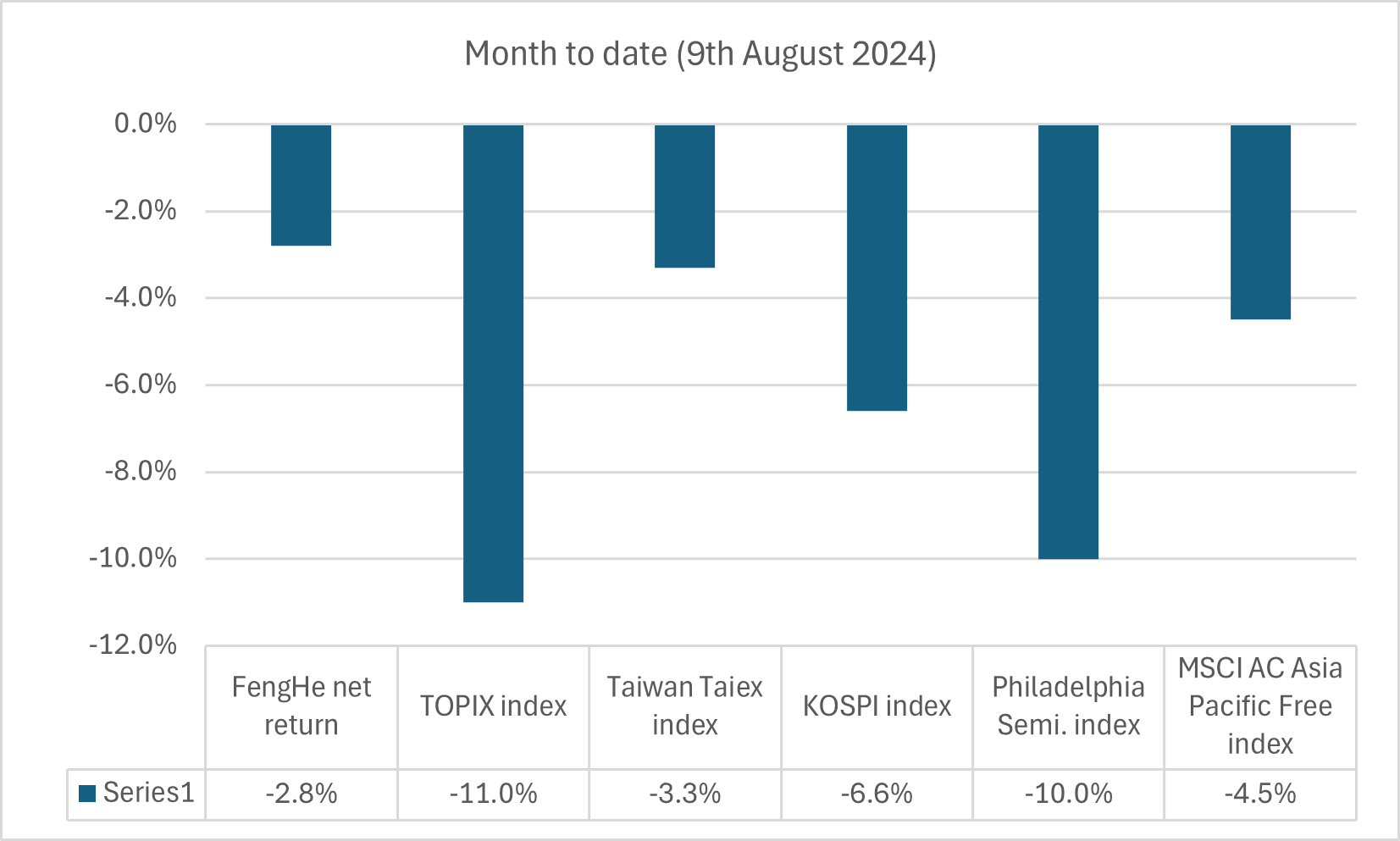How this technology & AI themed fund manager navigated through the “carry trade blow up”
The first few trading days in August were a rollercoaster for many fund managers globally, especially for those with either or both of Japan and tech exposures, like technology supply chain focused FengHe. They finished up over half a percent for the month (+12% YTD), having enacted stop-losses in the first week of the month after breaching a -2.5% portfolio drawdown. Unusually, this was the second time this year they’ve enacted stop loss (the first time was covered in our prior interview with CIO Matt Hu a few months back - (VIEW LINK) – ordinarily a once-a-year event based on the prior decade for the fund).
We thought sharing some insights about how FengHe was positioned, managed through, and adjusted its portfolio after the week-long volatility would be interesting.
The precursor
FengHe's gross exposure began to decrease in June, driven by a disciplined approach to valuation. This strategy involved taking profits and significantly reducing the majority of tech long positions, which resulted in a reduction in both gross and net exposure. By the end of July, gross exposure had decreased to 77%, while net exposure was reduced to 47%. Around 22% gross was in Japan, and FX hedges were in place for a portion of the Japanese exposures (with a focus on companies that mainly rely on the domestic economy and JPY revenues, export-oriented names, such as Hitachi and Renesas benefit from a weakening JPY, hence have less of a need for JPY exposure hedging). FX hedges had been reduced following gross reduction and yen strength the prior months. All in all, it was a favourable position to be in for fund with a focus on Asian technology, and a meaningful exposure to Japan.
The Carry Trade Blow-Up management
The firm's stop loss was triggered on the first day of the market rout, prompting the team to reduce gross exposure from 77% to 57% within the first three trading days. Between prudent pre-positioning and stop loss de-grossing, the team was down, but less so than the markets after the worst of the volatility and price drawdowns in the 2nd week of August.

They initially trimmed lower-weighted positions, followed by selective cuts higher up in the portfolio, reducing both long and short exposures. Before the market rebounded in the second week of August, some of their top holdings, particularly in Japan, had dropped nearly 30%, which the team believed was unjustified by the underlying fundamentals. Approximately two-thirds of their losses by the end of the first week were from Japan, with the remainder from Korea and Taiwan (China and the US remained flat).
As the market downturn unfolded, analysts were tasked with revisiting 12-month forecasts and valuations for all the names they cover, considering a bear case scenario. The combined effect of maintaining valuation discipline, profit-taking in June and July, and de-grossing in early August resulted in a more streamlined, higher-conviction portfolio consisting of 62 names and the lowest gross exposure since 2018. This has positioned the manager strongly to take advantage of opportunities when market volatility subsides.
The future positioning
Having recovered to being up for the month of August, the team is making some minor adjustments to the portfolio in keeping with their thesis around smaller, high-quality portfolios outperforming in volatile times. CIO Matt Hu’s view is that they’ve developed a highly effective strategy, which has consistently proven successful through numerous market cycles.
The core of this strategy is to focus on high-quality companies with strong profitability, increasing the size of these long positions while trimming lower conviction names and reducing the number of holdings. In volatile markets, where most stocks tend to decline, having too many holdings often leads to a lower hit rate.
The fund’s AI-related investments are upstream in the infrastructure layer, which is where capital allocation to AI is currently flowing. They’re comfortable that this cycle has more legs. Some of these names are seeing real earnings growth, and valuations are attractive following the recent correction.
4 topics

